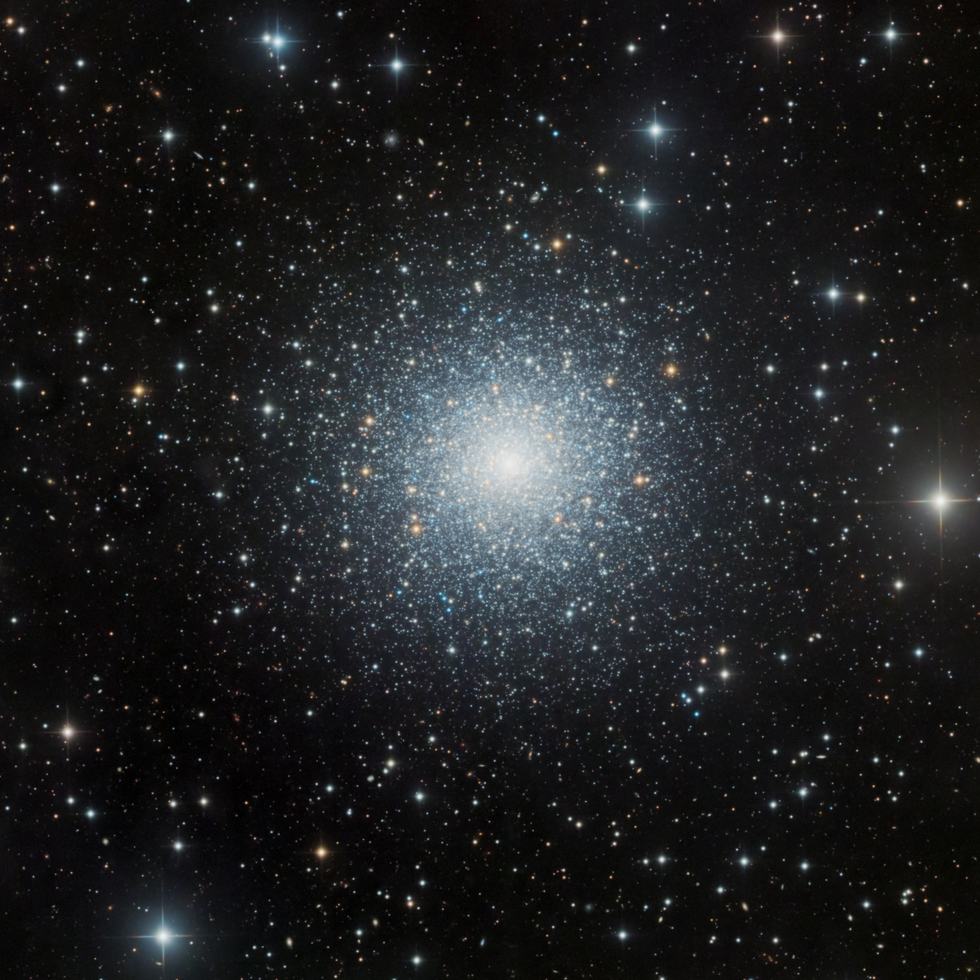NGC 1851
NGC 1851
“NGC 1851 (also known as Caldwell 73) is a relatively massive globular cluster located in the southern constellation of Columba. It is located 39.5 kilolight-years from the Sun.
It has one of the highest concentrations known for Galactic globular clusters. NGC 1851 is an estimated 9.2 billion years old with 551,000 times the mass of the Sun.
The cluster is surrounded by a diffuse halo of stars that stretches outward to a radius of 240 pc or more. This feature, if combined with the lack of tidal tail or associated stream of stars, suggests the cluster may be a stripped dwarf galaxy nuclei, similar to Omega Centauri, that has been accreted by the Milky Way. The tidal tail is still present though.”
Wikipedia
Tidal tail is at upper right.
Planewave CDK24, 0.6 m telescope.
FLI ProLine PL9000
Focal Length: 3962 mm, f6.5
El Sauce Observatory
Río Hurtado, Coquimbo Region, Chile
Credits: Eric Ganz / Telescope Live
13 hours LRGB. Feb and sept – Nov 2022
It has one of the highest concentrations known for Galactic globular clusters. NGC 1851 is an estimated 9.2 billion years old with 551,000 times the mass of the Sun.
The cluster is surrounded by a diffuse halo of stars that stretches outward to a radius of 240 pc or more. This feature, if combined with the lack of tidal tail or associated stream of stars, suggests the cluster may be a stripped dwarf galaxy nuclei, similar to Omega Centauri, that has been accreted by the Milky Way. The tidal tail is still present though.”
Wikipedia
Tidal tail is at upper right.
Planewave CDK24, 0.6 m telescope.
FLI ProLine PL9000
Focal Length: 3962 mm, f6.5
El Sauce Observatory
Río Hurtado, Coquimbo Region, Chile
Credits: Eric Ganz / Telescope Live
13 hours LRGB. Feb and sept – Nov 2022
SPECIFICATIONS
Telescope
Planewave CDK24
Camera
FLI ProLine PL9000
Location
Chile
Date of observation
2022
Filters
LRGB
Processing
Pixinsight , Lightroom , SPCC, NoiseXTerminator, BlurXTerminator


